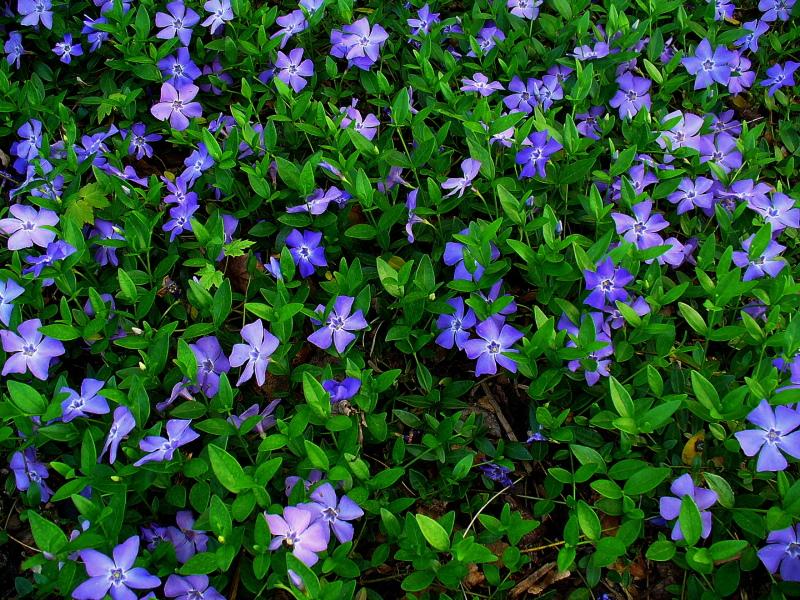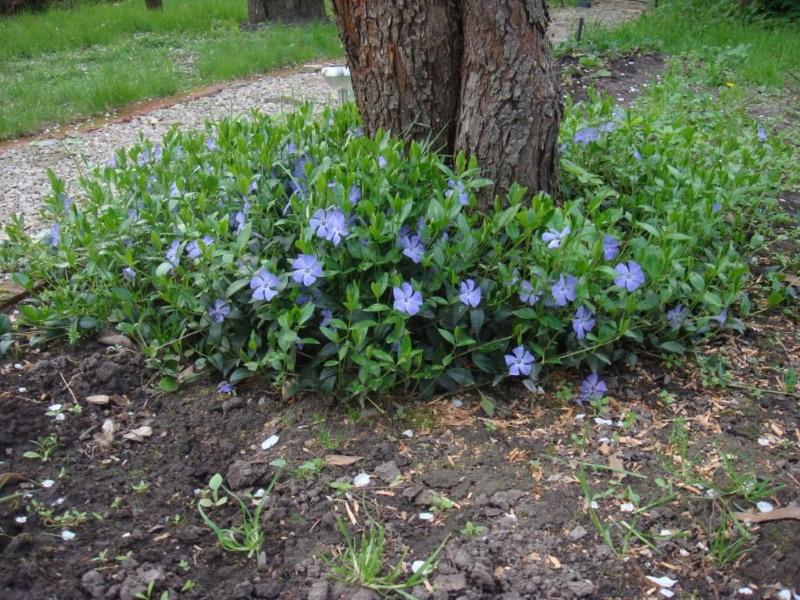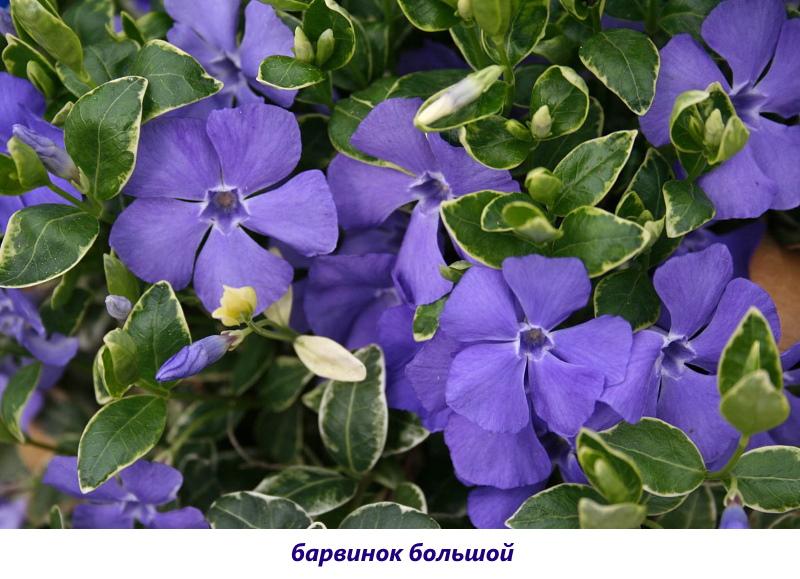The best plant for lazy gardeners - periwinkle, planting and care, photo
 He is not afraid of drought, he feels good in shady areas and covers the flower bed with a beautiful rug. This is an unpretentious periwinkle, planting and care (the photo will be in the article) for which are absolutely simple and do not require much effort. In just a season, a small bush turns into a lush pillow, under which even the earth is not visible. And in spring it will delight you with the delicate flowering of small flower-like stars, towering above the green cover on slender flexible peduncles.
He is not afraid of drought, he feels good in shady areas and covers the flower bed with a beautiful rug. This is an unpretentious periwinkle, planting and care (the photo will be in the article) for which are absolutely simple and do not require much effort. In just a season, a small bush turns into a lush pillow, under which even the earth is not visible. And in spring it will delight you with the delicate flowering of small flower-like stars, towering above the green cover on slender flexible peduncles.
Characteristic features and types of periwinkle

The periwinkle is famous for its decorative leaves with a dense leathery texture. They seem to be plastic, dense, dark green in color with a glossy sheen. The leaf plate is oval, with a pointed tip and clearly traced veins of a lighter shade. There are absolutely gorgeous variegated varieties with a cream border or specks.
Mass flowering in periwinkle lasts from April to early summer. During this period, thin peduncles with funnel-shaped flowers of 5 petals rise above the green rug of creeping shoots. Most often, purple or blue flowers are found, but there are varieties with white and even pink colors.
In gardens and flower beds, you can see the following varieties of periwinkle:
- Large - evergreen shrub up to 40 cm high, blue flowers 4 cm in diameter, the most thermophilic species.

- Small - also evergreen, but slightly shorter, maximum 30 cm, periwinkle with excellent frost resistance.

- Pubescent is a deciduous species with blue flowers.

- Herbaceous - the most light-loving deciduous species with creeping shoots. The height of the bush does not exceed 20 cm.

Periwinkle - planting and care photo
This plant is rightfully considered a ground cover, because its creeping stems quickly take root and give new branches. And it is also one of the most unpretentious crops that can survive in the shade.
Once you plant a periwinkle, you don't have to worry about its further development. The bushes themselves will multiply, and creep over the site, and can even displace neighboring, less tenacious plants.
When and how to plant
Periwinkle reproduces both by seeds and vegetatively. Seeds are usually sown directly into the ground in April, but you can first plant them on seedlings in March.
However, vegetative reproduction is most often used:
- planting shrubs of bushes;
- rooted processes;
- cuttings of shoots.
These methods give faster results and allow you to see flowering already in the year of planting.
The periwinkle feels best in a semi-shady place, with the exception of the herbaceous variety.Although it will grow with a lack of light, flowering will not come. The flower prefers soil that is loose, nutritious and with neutral acidity. Before planting, it is advisable to dig up the flowerbed with compost.
How to care
 Care for periwinkle will be minimal, because this culture is distinguished by its vitality. Basically, you should more often look to young plantings to help them get stronger. To do this, you need to monitor and water the bushes in time, you can feed them with organic matter. In the future, adult bushes can develop without the help of a gardener. If it rains, that's enough for them.
Care for periwinkle will be minimal, because this culture is distinguished by its vitality. Basically, you should more often look to young plantings to help them get stronger. To do this, you need to monitor and water the bushes in time, you can feed them with organic matter. In the future, adult bushes can develop without the help of a gardener. If it rains, that's enough for them.
Periwinkle is not particularly picky about feeding. It is enough to apply fertilizer just twice a season: in spring - compost, in the fall - potassium-phosphorus preparations.
Bushes hibernate well and without additional shelter. Only a large periwinkle in the middle lane needs good mulch. He has the lowest winter hardiness and after freezing the bushes are difficult to recover.